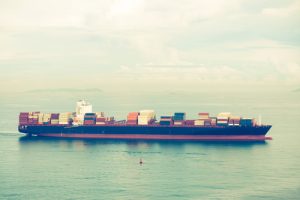 A rebound in commodity values meant substantial recycling-related revenue boosts for North America’s two largest residential haulers.
A rebound in commodity values meant substantial recycling-related revenue boosts for North America’s two largest residential haulers.

Resource Recycling keeps you on top of critical industry trends and brings unparalleled analysis of the evolving materials stream, market turbulence, policy trends and more.
Sign up for our free weekly e-newsletters to receive the latest news directly.
 A rebound in commodity values meant substantial recycling-related revenue boosts for North America’s two largest residential haulers.
A rebound in commodity values meant substantial recycling-related revenue boosts for North America’s two largest residential haulers.
Contract negotiations between West Coast dock workers and their employers have appeared to hit a boiling point, leaving recycled material in need of export stuck in ports – and potentially bound for landfills.
 A global recycling trade group says China has rekindled its scrutiny of imported plastics.
A global recycling trade group says China has rekindled its scrutiny of imported plastics.
 New York City businesses achieve a waste-reduction goal, and two popular beverage companies make changes to the materials they use for packaging.
New York City businesses achieve a waste-reduction goal, and two popular beverage companies make changes to the materials they use for packaging.
 CarbonLite, a reclaimer producing food-grade recycled PET, will double its processing capacity this year with the construction of a $62 million facility in Dallas.
CarbonLite, a reclaimer producing food-grade recycled PET, will double its processing capacity this year with the construction of a $62 million facility in Dallas.
 A story about rising commodity prices drew our readers’ attention last month. And so did Waste Management’s take on the ups and downs of recycling markets.
A story about rising commodity prices drew our readers’ attention last month. And so did Waste Management’s take on the ups and downs of recycling markets.
 Chinese customs authorities are inspecting every container entering the country at certain ports, causing longer shipping times. And some observers say the enforcement efforts could also be driving down recovered paper prices.
Chinese customs authorities are inspecting every container entering the country at certain ports, causing longer shipping times. And some observers say the enforcement efforts could also be driving down recovered paper prices.
 China may be gearing up to further crack down on waste materials coming into the country, which could impact scrap imports.
China may be gearing up to further crack down on waste materials coming into the country, which could impact scrap imports.
 China’s three-month-old import action has stalled shipments of some recovered materials from the U.S. and led to substantial import fee increases for shipments that do clear customs.
China’s three-month-old import action has stalled shipments of some recovered materials from the U.S. and led to substantial import fee increases for shipments that do clear customs.
